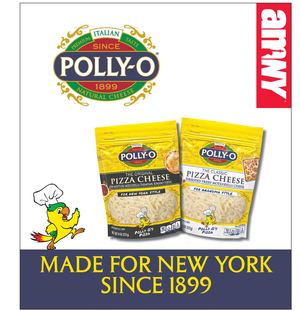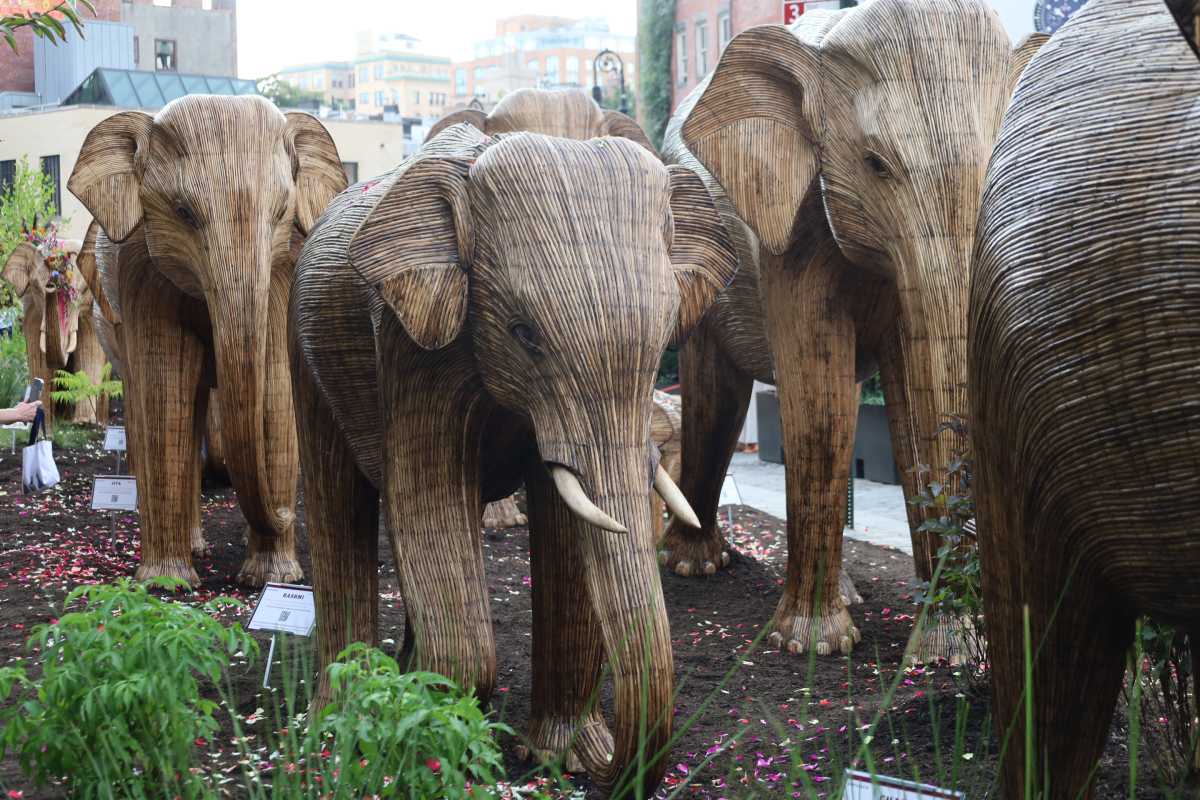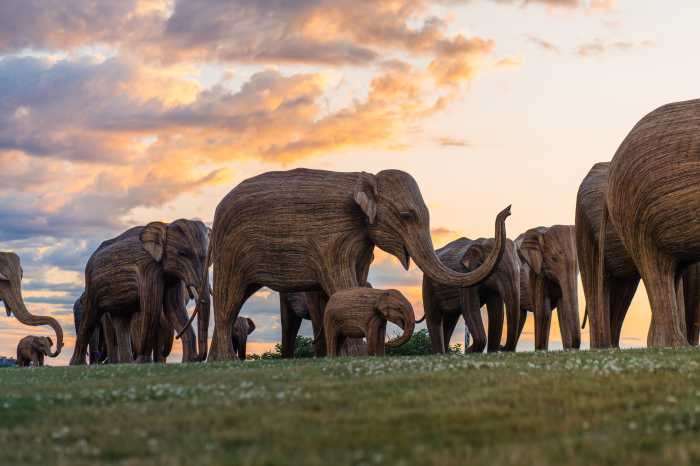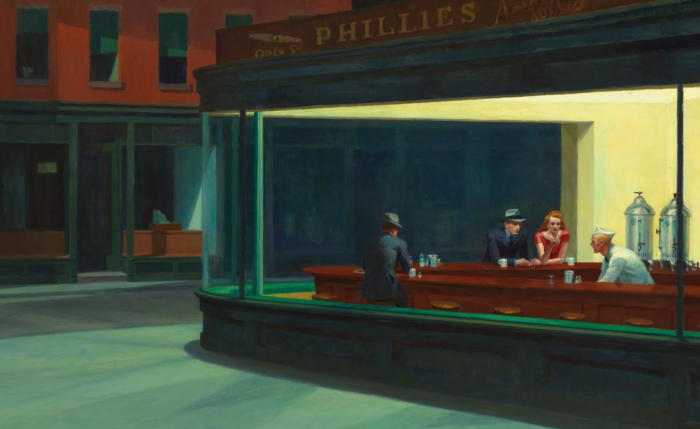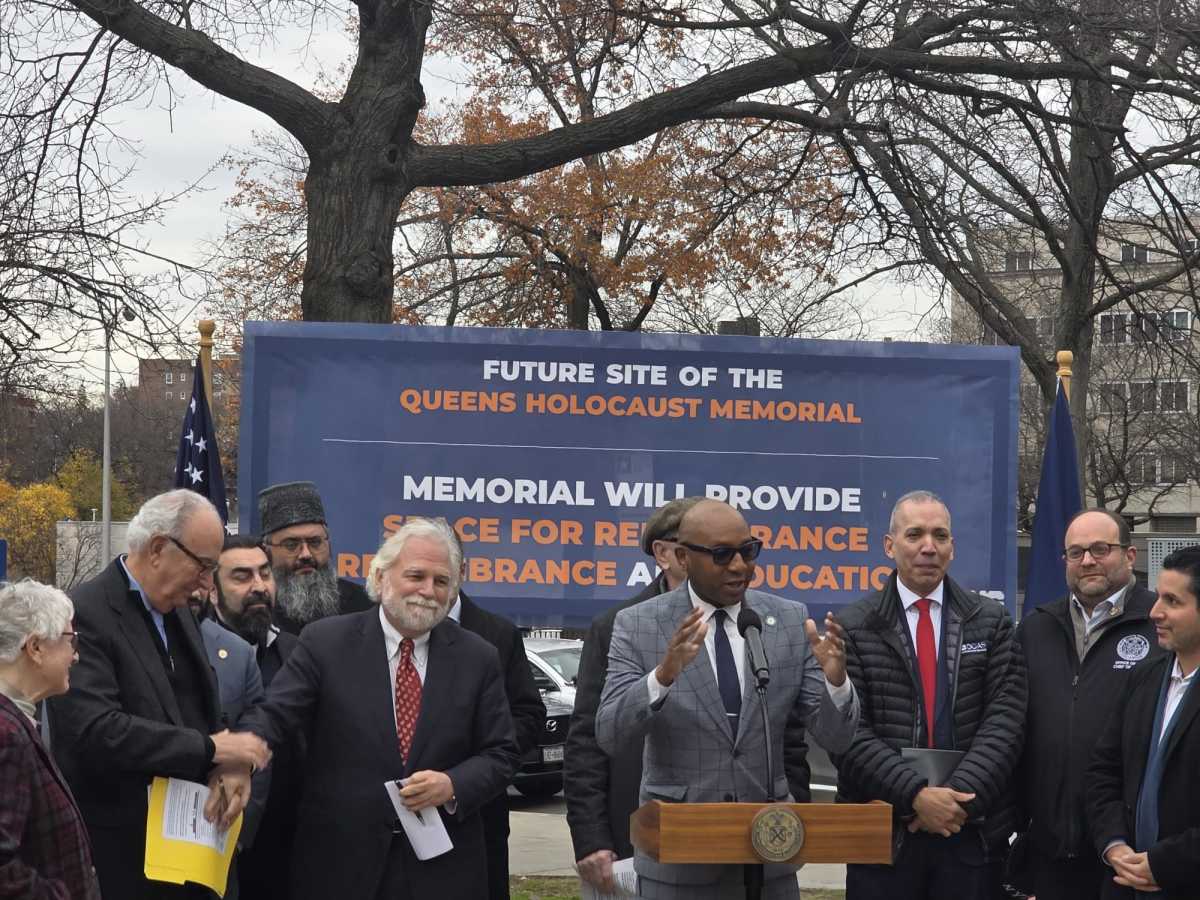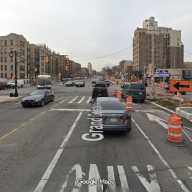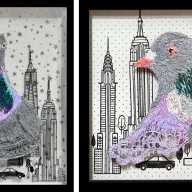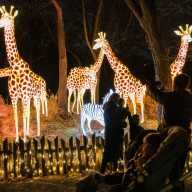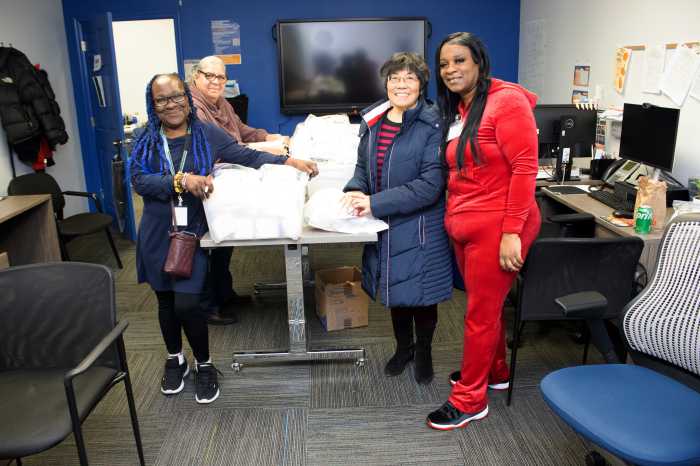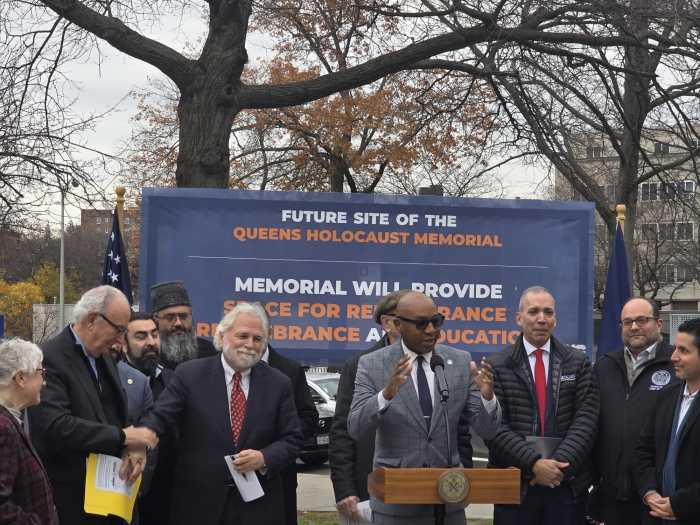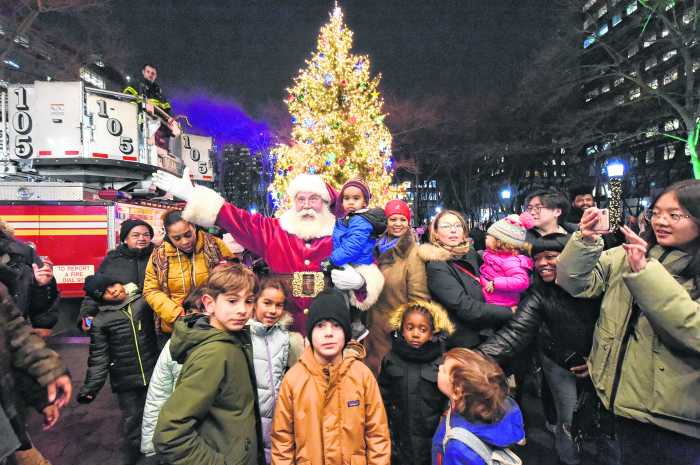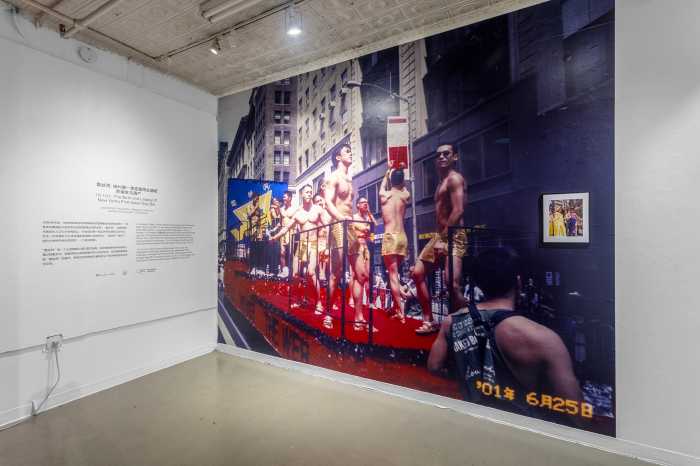If you find yourself walking through the Meatpacking District and notice a large herd of elephants, your eyes are not deceiving you – it’s the The Great Elephant Migration, “from India with love.”
Namaste was the word of the day on Sept. 6 as elected officials, both local and from abroad, along with hundreds of bystanders gathered to witness the unveiling of 100 life-sized elephant sculptures, which were blessed with a showering of colorful flower petals and a symbolic feeding of a real coconut.
“It forces people to remember the majesty of these animals, that the world needs them and all the beauty that surrounds us,” said Christina Diaz, who was taking photos of the wooden beasts.
With support from Elephant Family USA, the Coexistence Collective – a group of 200 artisans merging art and conservation – replicated the sculptures from a herd of elephants the artists coexist with, each with their own name and personality, like the baby elephant, Flowerpecker.


Deep in the Nilgiri mountains of South India lies a biosphere reserve where more than one million indigenous individuals live alongside wildlife, including the tusked pachyderms.
Recently, an invasive plant species known as “lantana camara” has been diminishing the food source of local herbivores, leaving the giant mammals hungry.
“Elephants eat crops, destroy houses and sometimes kill people accidentally [searching for food],” Tarsh Thekaekara told amNewYork Metro, who co-founded the Coexistence Collective with Ruth Ganesh. Thekaekara studied elephant personalities as part of his PhD dissertation at Oxford University and said that engaging with elephants is a part of everyday life in India where the animals are also considered sacred.
In a true reclamation move, the Coexistence Collective used the invasive plant species as material and created the herd to bring attention to the cohabitation between people and nature.
The Great Elephant Migration made its first stop in Rhode Island on July 4 and arrived to NYC earlier this month where it will live until Oct. 20. It will then travel to Miami, then Montana and eventually land in Los Angeles next July, where they will then be sold with prices ranging from $8,000 to $12,000 with proceeds benefiting projects that will help save and encourage the coexistence between wildlife and humans, specifically amongst the Soligas, Bettakurumbas, Kattunayakan and Paniyas tribes.


The 100 elephants are scattered across the Meatpacking District, with the majority lining 9th Avenue from 14th Street down to Gansevoort Plaza. Others can be found farther west along 14th Street, Gansevoort Landing, and the corner of Horatio Street and 8th Avenue.
“It’s not just public art, it’s public art with a message,” said Jeffrey LeFrancois, executive director of the Meatpacking Business Improvement District.
“Our message is one of ancestral knowledge of how to live with wildlife,” Ganesh told amNewYork Metro.
The NYC leg of The Great Elephant Migration is co-presented by Art&Newport. While in Manhattan, Indian fashion house Sabyasachi will host activations during fashion week with separate programming running through October.
“Life is never the same when an elephant enters it,” said Ganesh, who, in addition to bringing awareness to the need for elephant conservation, wanted to commemorate her late friend Mark Shand, who introduced her to the majestic animals 20 years ago.
Shand, who was a British travel writer, conservationist and brother of Queen Camilla died in 2014 at the age of 62.
“Life is a great adventure or nothing at all,” added Ganesh. “[The elephants] have given me a rocking adventure.”

Read more: UES School Sued Over Unsafe and Unsanitary Conditions
